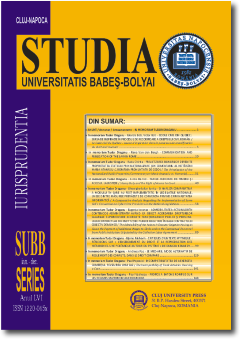METODA COMPARATIVĂ – O USTENSILĂ EPISTEMOLOGICĂ NECESARĂ ÎN STUDIILE DE DREPT COMPARAT
THE COMPARATIVE METHOD: AN EPISTEMOLOGICAL TOOL NEEDED IN COMPARATIVE LAW STUDIES
Author(s): Alina-Emilia CiorteaSubject(s): Law, Constitution, Jurisprudence
Published by: Studia Universitatis Babes-Bolyai
Keywords: comparative law; comparative method; juxtaposition; terms to be compared; comparative method’s definition; history of comparative method; tertium comparationis; comparative method’s elements; ...
Summary/Abstract: The comparative method: a necessary epistemological tool in comparative legal studies This essay will consider the aims of comparative law. It will argue that the comparative method is the needed epistemological tool for every legal theoretician who conducts comparative studies. Further on, the article will state a definition that was envisaged by scholars along with the author’s proposed definition. The history of the comparative method will be examined in details, explaining how the steps of comparison work in practice. Afterwards, each element of the comparative method will be developed and it will be further considered what is to be understood by the comparability of the terms to be compared. Also, it will be valuable to look at the relationship between the comparative method and juxtaposition and, in particular, to some of the weaknesses and strengths of both of these terms. By way of conclusion, some observations will be made on how the proposed definition of the comparative method is more appropriate and more comprehensible then the ones that were already phrased by scholars.
Journal: Studia Universitatis Babes Bolyai - Iurisprudentia
- Issue Year: 62/2017
- Issue No: 4
- Page Range: 215-236
- Page Count: 22
- Language: Romanian

